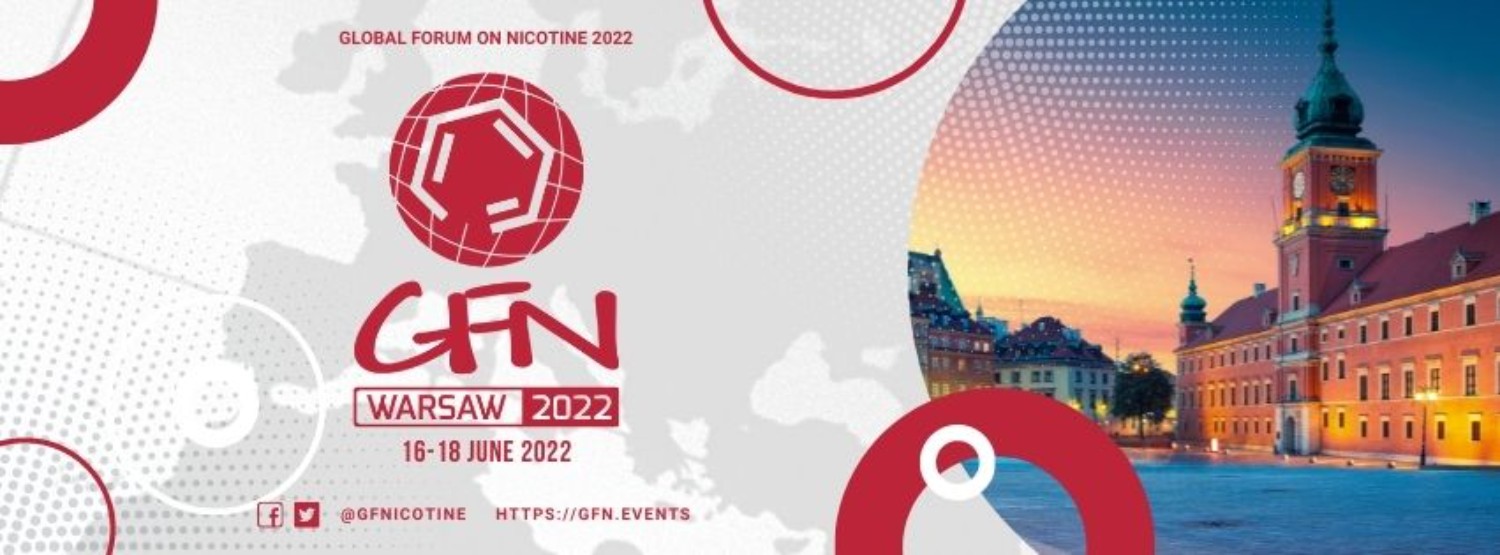Under the theme ‘Tobacco harm reduction, here for good’, this year’s Global Forum on Nicotine (GFN) held in Warsaw, underscored the need for greater urgency and ambition to end smoking by implementing policy grounded in both science and human rights.
Hundreds of consumer advocates returned to Warsaw, Poland for the first time in two years for an in-person forum, with the event having over 50 international experts on nicotine and tobacco. The leading topic of the ninth nicotine congress was limiting health harms associated with smoking.
Topics focused on reducing health harm to smokers and health policy based on legal regulations for alternative nicotine products, such as e-cigarettes. In addition to the panels, the conference program included speeches by 3 keynote speakers and interviews at the GFN TV studio.
Studies and statistics were presented from dozens of countries, which show a reduction in deaths and hospitalizations from smoking-related diseases, after the entry of alternative tobacco products into these countries, such as e-cigarettes, non-combustible products, snus etc.
Professor Karl Fagerström from Sweden, made a brief presentation of the evolution of sales of cigarettes, snus and nicotine pouches in Sweden from 1916 until today. He noted that the entry of snus, but also nicotine pouches, in 1973 and 2016 respectively, coincided with a significant decline of cigarette sales in Sweden.
He then presented data from the Eurobarometer (February 2021) showing that Sweden is a unique example in Europe, where smokers have fallen below 5% of the total population, and deaths and hospitalizations due to diseases related to smoking are much lower than the European average. He said snus is the first and only tobacco product to date that has been approved by the FDA as a reduced risk product for lung and oral cancer.
This year’s Michael Russell Award recipient at the ninth edition of the Global Forum on Nicotine was Professor Brad Rodu, a professor of Medicine at the University of Louisville (UofL) in Kentucky.
A new study by Dr. Lars M. Ramström, a renowned tobacco dependence researcher, was also launched at the GFN. The research findings show that switching from smoking to Swedish-style snus, a safer nicotine product, is a more effective strategy to reduce the harms caused by tobacco.
What Does this Mean for Africa?
Policymakers in Africa can learn from the new research which shows there is no clear association between the implementation of the World Health Organization’s (WHO) tobacco control measures and low levels of tobacco-related mortality.
Africa is falling behind the rest of the world in the battle to save the lives of millions of smokers. According to the World Health Organization, more than 80% of the world’s current smokers live in low- and middle- income countries. In Sub-Saharan Africa, the increase in tobacco smoking is facilitated by the fast-growing population and an increase in purchasing power of the consumers.
Stakeholders must learn from the countries like Sweden, the UK and New Zealand where alternative nicotine products are being used to slash smoking rates. Sweden is about to be the first country in the world to become smoke-free thanks to oral nicotine products. For Africa, such an achievement is a pipe dream due to our governments’ refusal to embrace safer alternatives.
Dr Karl Fagerström’s research demonstrates that tobacco-free oral nicotine products are likely to have the best potential for harm reduction among smokers who switch.
The World Health Organization continues to mistakenly advocate for prohibitions of low-risk alternatives to smoking and applauds those countries that ban these products. Policymakers in Africa must consider the likely cost to human life of such bans.
Author: Joseph Magero of Campaign for Safer Alternatives.

THR Topics
Popular Posts
Quick Links
Women in THR
Related Posts
 Letter to the World Health Organization (WHO)
Letter to the World Health Organization (WHO)
Letter to the World Health Organization (WHO)
 Public Health implications of vaping in Germany
Public Health implications of vaping in Germany
Public Health implications of vaping in Germany
 Public Health implications of vaping in the United States of America
Public Health implications of vaping in the United States of America








